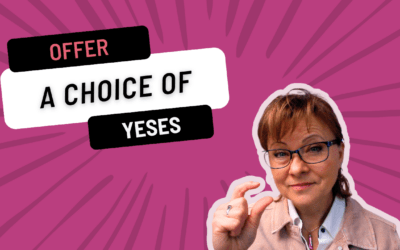Changes to your pricing model are a normal part of business. Here’s how to normalize it in your client conversations.
From the mail bag: “What do you do when a former client comes back to you after 2-4 years and your pricing has changed? How do you address that?”
If you’ve been doing business for a few years, you either have encountered or are about to encounter this situation. Will the client will expect to pick back up with your services at the rate you had established years ago? How do you navigate this tricky situation?
The question comes from the business development person at a video production agency. They’ve been successfully focused on driving VALUE for clients. As a result, they’ve been right-sizing their rates to reflect the video marketing expertise they’ve acquired and are using to benefit the clients they serve. That makes sense, right? So why do creative agencies and service providers in particular feel the pressure to justify price changes?
Let me be clear: This scenario happens quite often in every industry you can imagine. Restaurants update prices in response to seasonal availability of foods. My streaming services have all inched up pricing over the last year. Heck, gas stations update pricing daily and yet I’ve never had a chat with Petroleum Pete about why I need to pay a different rate than I did for my last fill up.
Many times, new business owners will take back the client and not discuss how their pricing has changed. This can lead to quite a bit of frustration down the line. The business owner may withhold some services in an attempt to remain profitable. This risks the client receiving suboptimal work because of a price discrepancy they aren’t even aware of.
Instead of bracing yourself for resistance or automatically assuming you are expected to offer older prices, try this instead. Step back and approach the conversation like you would with any other new customer. Do what you would do with any other discovery call, which I like to remember as the “PBS” sequence: define the problem, establish the available budget, then suggest the solution.
Once the client has clearly communicated their needs and you are aware of the full scope of the problem to solve, it’s time to use the following steps communicate your new pricing.
Three Tips to Communicate Your New Pricing:
1. You will only need to “explain” a price difference if the client asks about it.
Don’t get yourself all locked up in anticipation of push-back. In my experience, a gap of a few years less is long enough that fewer than half of your returning clients will ask to discuss the difference. They are in business, too, and they know that rates change.
You provided great service and value to them last time, right? Assure them the same successful outcome awaits them when the project and price and in proper balance.
2. If the client DOES question the price, resist the urge to instantly discount.
This one is good for new and returning clients. Popping out a discount just because someone asked for it means you have no price integrity. Eww.
Instead, say something like, “That’s true. We have changed the rates to reflect what it now takes for us to be successful in helping our clients solve (restate their problem). Is that a deal breaker?”
You will often be pleasantly surprised with the answer.
3. Wait for the answer.
Most clients will agree that the price change alone doesn’t kill the deal. If they say yes, then again resist your urge to solve it for them. Instead, ask, “What do you think we should do?”
This puts the burden on them to be gutsy enough to ask for a discount. Most won’t. They will want to reduce the work, complete it in phases, or find the additional funding.
Your responsibility is to help your company and the client stay focused on the value of the outcomes you are being hired to create. A right-fit budget allows you to do the work and be generous with your service.
#provokebetter sales strategies so that you have the resources you need to truly solve your client’s needs and help your business.



